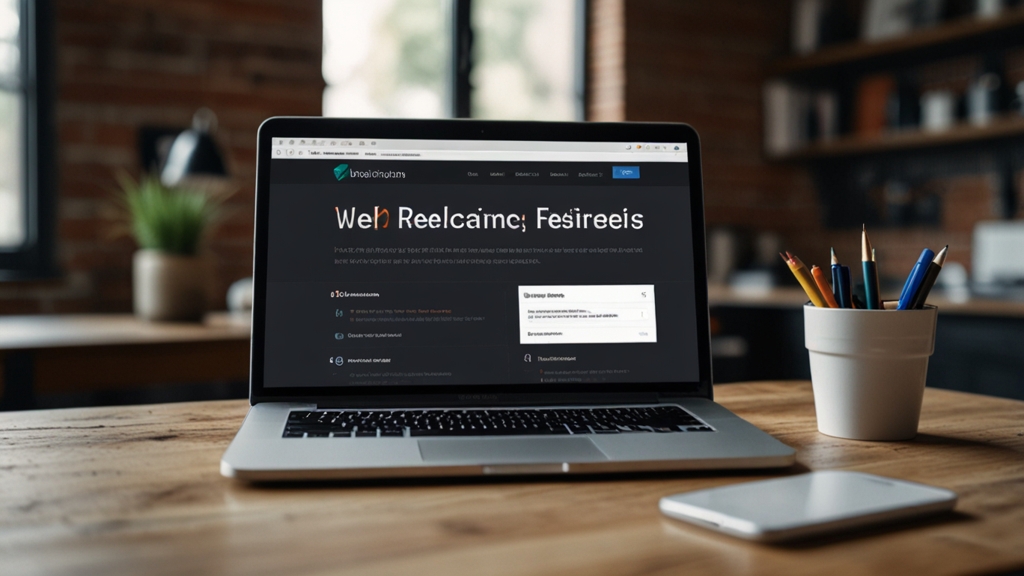The Developer's Toolkit: Essential Front-End Frameworks for Fast Prototyping
In the fast-paced world of web development, time is often of the essence. Front-end developers are frequently tasked with creating functional prototypes quickly to showcase concepts, validate ideas, or obtain stakeholder feedback. To streamline this process, developers rely on front-end frameworks specifically designed for rapid prototyping. These frameworks provide ready-made components, standardized guidelines, and help eliminate much of the boilerplate that can slow down development. Let's delve into some of the essential front-end frameworks that can accelerate your prototyping workflow.
Bootstrap
Bootstrap, developed by Twitter, is perhaps the most well-known and widely used front-end framework out there. It offers a comprehensive suite of CSS and JavaScript tools that make it easy to create responsive layouts. Its grid system, extensive pre-styled components, and customizable design make it ideal for both beginners and seasoned developers.
"Bootstrap’s greatest strength is its ease of use and flexibility. Whether you are an experienced developer or a novice, you can get a prototype up and running rapidly with very little effort."
Foundation
Foundation, by Zurb, is another excellent choice. It’s particularly renowned for its flexibility and advanced customization options. Foundation includes an array of components that can be easily styled to match your brand’s look and feel. Moreover, it offers extensive documentation and community support, making it easier to troubleshoot and enhance your prototypes.
Materialize
For those who prefer a design system based on Google's Material Design, Materialize is the framework to consider. It comes with ready-made components and animations that adhere to Material Design guidelines, ensuring a modern and intuitive user interface. The framework is especially handy if you aim to create a prototype that looks both professional and visually appealing with minimal effort.
"Materialize provides the best of both worlds: the intuitiveness of Material Design and the ease of use that comes from a well-documented, developer-friendly framework."
Bulma
Bulma is a modern CSS framework based on Flexbox. It is lightweight yet powerful, allowing developers to create responsive layouts quickly. Bulma's syntax is straightforward and intuitive, making it a favorite among developers who prefer a less complex solution. Its grid system is particularly appreciated for its simplicity and ease of use.
Tailwind CSS
Unlike traditional frameworks, Tailwind CSS focuses on utility-first principles. It allows you to create complex designs directly in your HTML by applying utility classes. This approach provides unparalleled flexibility and reduces the need for writing custom CSS. Tailwind CSS can accelerate your prototyping phase by providing a set of default themes that can be quickly customized to fit your project’s needs.
"Tailwind CSS offers a refreshing departure from conventional frameworks, giving you the freedom to design directly in your markup without sacrificing flexibility or maintainability."
Choosing the Right Framework
The best framework for your prototyping needs depends on several factors including your familiarity with the framework, the complexity of your project, and your design requirements. While Bootstrap and Foundation are excellent for general-purpose prototyping, Materialize is ideal for fans of Material Design. On the other hand, if you value simplicity and clean syntax, Bulma might be your go-to choice. Tailwind CSS offers a uniquely flexible approach that can be a game-changer for developers comfortable with utility classes.
Conclusion
Fast and efficient prototyping is crucial in the web development process. Selecting the right front-end framework can significantly reduce development time and effort. Whether you opt for the universally popular Bootstrap, the highly customizable Foundation, the stylish Materialize, the minimalist Bulma, or the flexible Tailwind CSS, each framework offers unique benefits that can help you create impressive prototypes quickly and efficiently. Ultimately, the best way to determine which framework fits your needs is to experiment with each and see which one aligns best with your development style and project requirements.












